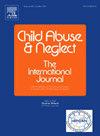Variation in decision-making on out-of-home placements in child and family welfare services: A new approach
IF 3.4
2区 心理学
Q1 FAMILY STUDIES
引用次数: 0
Abstract
Background
Variation across local administrative units (municipalities) is critical in child welfare, as inconsistencies in out-of-home placement decisions can create inequalities in children's access to support. Given the impact of placement decisions on a child's well-being, and long-term outcomes, ensuring fairness and consistency is essential in promoting equal opportunities for all children.
Objective and setting
This study explores municipal variation in out-of-home placement decisions following referrals in Danish child and family welfare using 52.649 out-of-sample predicted risk scores on 27.341 unique children across 94 municipalities in 2016 and 2017. While existing research primarily focuses on overall placement rates or individual placement probabilities, we extend the literature by analyzing municipal differences in referral handling beyond raw rate variations.
Methods
Using a novel approach that integrates Predictive Risk Models (PRMs) with linear regressions to control for individual predicted risk scores, we isolate municipal decision-making variation from broader socioeconomic influences. This provides a clearer understanding of how referral outcomes differ across municipalities.
Results
First, our findings reveal that significant inter-municipal differences persist after we adjust raw placement rates for variation attributable to family and child characteristics, and calendar time variation. Second, variations in socioeconomic structures influencing child risk outcomes do not fully account for these differences. Thus, it is discussed whether the remaining variation may stem from local decision-making practices, shaped by local organizational dynamics and inherent uncertainties (such as lack of information and control over future events) in child welfare assessments.
Conclusions
By emphasizing the potential role of local decision-making practices, this study advances research on decision-making and highlights the need for further investigation into how local organizational factors (such as agency policies, resource availability, work load, organizational culture and support) shape referral-placement outcomes. Implications for policy and practice are discussed.
儿童和家庭福利服务机构外安置的决策差异:一种新方法
地方行政单位(市)之间的差异对儿童福利至关重要,因为家庭外安置决定的不一致可能造成儿童获得支持的不平等。鉴于安置决定对儿童福祉和长期结果的影响,确保公平和一致性对于促进所有儿童的平等机会至关重要。本研究利用2016年和2017年94个城市的27.341名独特儿童的52.649个样本外预测风险评分,探讨了丹麦儿童和家庭福利转介后家庭外安置决策的城市差异。虽然现有的研究主要集中在总体安置率或个人安置率上,但我们通过分析城市在转诊处理方面的差异来扩展文献。方法采用一种新颖的方法,将预测风险模型(PRMs)与线性回归相结合,以控制个体预测风险评分,将市政决策差异与更广泛的社会经济影响分离开来。这使人们更清楚地了解不同城市之间转诊结果的差异。结果:首先,我们的研究结果表明,在我们调整了原始安置率后,由于家庭和儿童特征的变化以及日历时间的变化,显著的城市间差异仍然存在。其次,影响儿童风险结果的社会经济结构的差异并不能完全解释这些差异。因此,本文讨论了剩余的差异是否可能源于当地的决策实践,这些决策实践受当地组织动态和儿童福利评估中固有的不确定性(如缺乏信息和对未来事件的控制)的影响。通过强调当地决策实践的潜在作用,本研究推进了决策研究,并强调需要进一步调查当地组织因素(如机构政策、资源可用性、工作量、组织文化和支持)如何影响转介安置结果。对政策和实践的影响进行了讨论。
本文章由计算机程序翻译,如有差异,请以英文原文为准。
求助全文
约1分钟内获得全文
求助全文
来源期刊

Child Abuse & Neglect
Multiple-
CiteScore
7.40
自引率
10.40%
发文量
397
期刊介绍:
Official Publication of the International Society for Prevention of Child Abuse and Neglect. Child Abuse & Neglect The International Journal, provides an international, multidisciplinary forum on all aspects of child abuse and neglect, with special emphasis on prevention and treatment; the scope extends further to all those aspects of life which either favor or hinder child development. While contributions will primarily be from the fields of psychology, psychiatry, social work, medicine, nursing, law enforcement, legislature, education, and anthropology, the Journal encourages the concerned lay individual and child-oriented advocate organizations to contribute.
 求助内容:
求助内容: 应助结果提醒方式:
应助结果提醒方式:


